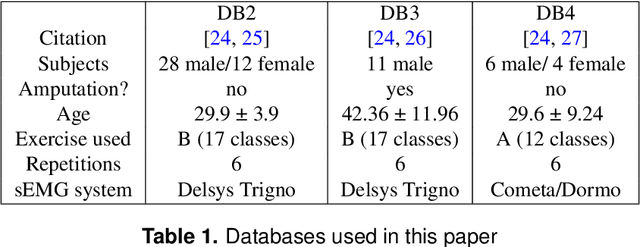Stephan Johann Lehmler
Understanding Activation Patterns in Artificial Neural Networks by Exploring Stochastic Processes
Aug 01, 2023Abstract:To gain a deeper understanding of the behavior and learning dynamics of (deep) artificial neural networks, it is valuable to employ mathematical abstractions and models. These tools provide a simplified perspective on network performance and facilitate systematic investigations through simulations. In this paper, we propose utilizing the framework of stochastic processes, which has been underutilized thus far. Our approach models activation patterns of thresholded nodes in (deep) artificial neural networks as stochastic processes. We focus solely on activation frequency, leveraging neuroscience techniques used for real neuron spike trains. During a classification task, we extract spiking activity and use an arrival process following the Poisson distribution. We examine observed data from various artificial neural networks in image recognition tasks, fitting the proposed model's assumptions. Through this, we derive parameters describing activation patterns in each network. Our analysis covers randomly initialized, generalizing, and memorizing networks, revealing consistent differences across architectures and training sets. Calculating Mean Firing Rate, Mean Fano Factor, and Variances, we find stable indicators of memorization during learning, providing valuable insights into network behavior. The proposed model shows promise in describing activation patterns and could serve as a general framework for future investigations. It has potential applications in theoretical simulations, pruning, and transfer learning.
Deep Transfer-Learning for patient specific model re-calibration: Application to sEMG-Classification
Dec 30, 2021



Abstract:Accurate decoding of surface electromyography (sEMG) is pivotal for muscle-to-machine-interfaces (MMI) and their application for e.g. rehabilitation therapy. sEMG signals have high inter-subject variability, due to various factors, including skin thickness, body fat percentage, and electrode placement. Therefore, obtaining high generalization quality of a trained sEMG decoder is quite challenging. Usually, machine learning based sEMG decoders are either trained on subject-specific data, or at least recalibrated for each user, individually. Even though, deep learning algorithms produced several state of the art results for sEMG decoding,however, due to the limited amount of availability of sEMG data, the deep learning models are prone to overfitting. Recently, transfer learning for domain adaptation improved generalization quality with reduced training time on various machine learning tasks. In this study, we investigate the effectiveness of transfer learning using weight initialization for recalibration of two different pretrained deep learning models on a new subjects data, and compare their performance to subject-specific models. To the best of our knowledge, this is the first study that thoroughly investigated weight-initialization based transfer learning for sEMG classification and compared transfer learning to subject-specific modeling. We tested our models on three publicly available databases under various settings. On average over all settings, our transfer learning approach improves 5~\%-points on the pretrained models without fine-tuning and 12~\%-points on the subject-specific models, while being trained on average 22~\% fewer epochs. Our results indicate that transfer learning enables faster training on fewer samples than user-specific models, and improves the performance of pretrained models as long as enough data is available.
 Add to Chrome
Add to Chrome Add to Firefox
Add to Firefox Add to Edge
Add to Edge